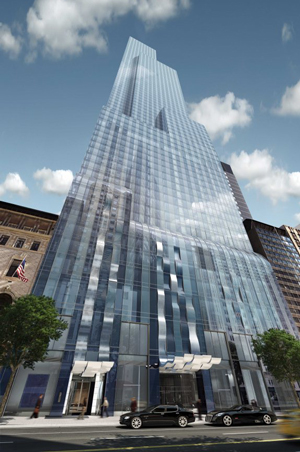Tall skinny skyline continues in New York
 A new generation of skyscrapers are redefining New York’s iconic skyline, cutting a super-skinny, super-tall and super-expensive new shape.
A new generation of skyscrapers are redefining New York’s iconic skyline, cutting a super-skinny, super-tall and super-expensive new shape.
There are now a number of buildings planned or under construction in Central Park south, affording views of the city's famous park for deep-pocketed buyers.
Three apartments in the area recently sold for more than $US100 million each.
Several more are planned in the area of Madison Square Park or further south.
“There really is a new type in skyscraper history that is just beginning to appear,” said Carol Willis, historian, founder, director and curator of The Skyscraper Museum.
“[They] will proliferate in the next five to 10 years and really change the character of the Manhattan skyline.”
The new buildings are all between 50 and 90 storeys high, aimed at multi-millionaire buyers looking for a “trophy apartment” in the sky.
A building called One57, located at 157 West 57th Street — also known as Billionaires Row — is considered the first of the new breed.
Opened in 2014, it stands 306 metres tall, with just 92 apartments over 75 storeys.
One57 was the highest residential building in New York until work started on nearly-finished the 432 Park Avenue building, an ultra-thin building with just 104 apartments across its 420 metre height.
But 217 West 57th Street is in the works, set to stand at 457 metres.
After that will come 111 West 57th Street, due in 2018, which is set to be just 18.28 metres at its widest.
Nordstrom Tower (also known as Central Park Tower or 217 West 57th Street) could outstrip them all, but formal plans are not yet complete.
New York’s particularly skinny buildings are the result of old planning laws that limit the footprint of a building but not the height.
This has led to a situation where developers can buy ‘air rights’ from neighbouring buildings, allowing them to overshadow nearby building and give their residents unrestricted views.
From there, progress in technology and building materials have seen taller and taller towers go up on tiny squares of land.
But not everyone encourages the constant upward-reaching.
The Municipal Art Society of New York (MAS) has published a report called ‘the Accidental Skyline’, in which it argues; “We believe that public access to light, air and green space cannot be sacrificed”.
“Protecting these qualities is critical to the economic health of New York City and the well-being of New Yorkers.”
The report studied in minute detail the shadows expected to be cast by new buildings, and found that nearly all the skyscrapers were built without proper public review, and so there was no assessment of their impact.
It is being used in a call to review the famous city’s urban planning.








 Print
Print